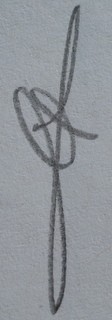
‘Carnation, Lily, Lily, Rose’ [1885] by John Singer Sargent, Oil on canvas, 68.5 in × 60.5 in
The title for the above painting by John Singer Sargent
‘Carnation, Lily, Lily, Rose’ is from the
song called ‘The Wreath‘ by eighteenth-century operatic composer Joseph Mazzinghi.
The two girls are the daughters of Frederick Barnard an illustrator by profession.
Dolly aged eleven is to our left and Polly aged seven is standing in front of her to our right. Sargent found inspiration to include Chinese lanterns whilst sighting them during an earlier boating expedition on the Thames with American artist Edwin Austin Abbey.
This en plein air technique literally influenced by Monet to John Singer Sargent was completed over countless sessions whilst visiting Broadway, Worcestershire, England – The Cotswolds.
I promise you would find a visit to the Cotswolds oh so very pretty just like these two adorable girls painted herewith. Therewith or herewith – its almost like going back in time.
The house of these very gardens was then owned by yet another friend of Sargent’s – American painter, writer and sculptor Frank Millet. Sadly he died in the sinking of the RMS Titanic in 1912.
A 2016 auction of the beautiful “Poppies – A Study Of Poppies for ‘Carnation, Lily, Lily, Rose'” sold for £6,858,000 USD at Sotheby’s.
The history, its painted subjects, the luminous mastery and intricate technical derivation would make the original ‘Carnation, Lily, Lily, Rose’ a grand prize for any serious Art Collector.
What do you like most yourself about this painting?
The trodden grasses? The girls’ concentrated facial expressions?
Warm Chinese lanterns incandescently glowing amidst arty white lillies?
I particularly love that Barnard’s daughters are thoroughly engaged, individually, in an unspeaking togetherness. A shared purpose to delight each other and themselves equally.
John Singer Sargent gifts us with this painting for the ages.

‘Robert Louis Stevenson and His Wife’ [August 1885] by John Singer Sargent, Oil on canvas, 20 1/2 x 24 1/2 in
Rock and roll baby!
I thought of The Beatles when I first saw the painting ‘Robert Louis Stevenson and His Wife’. Sgt Pepper’s Lonely Hearts Club Band and more specifically George Harrison.
Stylistic lyrical geniuses.
Robert Louis Stevenson is super cool. Sargent captures Robert’s inherent quirkiness, his restlessness of thought. Creatives can, at times, exhibit this characterisation without being aware of their indifferent juxtaposition.
Art takes over the mind. It becomes the working of the hands. The pacing of the feet by sheer conscious will.
Interestingly his wife appears almost ghostly and distant in this full-bodied reddened portrait. Stevenson looks as if he wants to ‘get away’ to his writing even as Sargent’s brush strokes are being formed.
The opened door and positioning of our protaganist might seem incidental. However, would you have chosen this composition over all other possible scenic angulations?
We have to say ‘Eureka!’
John Singer Sargent is a true portrait artisan. The Rubens of his generation. Sargent is as accomplished at Impressionist works as he is portrait Realism.
‘The talk of the town’.. Sargent probably knew someone’s ‘ears were burning’.

‘Miss Elsie Palmer’ [1889-90] by John Singer Sargent, Oil on canvas, 75 1/8 x 45 1/8 in
I found the pose of ‘Miss Elsie Palmer’ quaint and disciplined. A pragmatic solution to posing for great lengths of time. Her hair natural and the clothing fabrics a multitude of folding criss-crossing layers.
Miss Elsie Palmer’s eyes look rather mournful here. This is a professional portrait revealing a practically perfect young lady in every way. Modest and likeable. Sargent’s use of light and dark is exemplary as expected. Mood is, as Warhol commented in his own way, where Sargent’s genius shines.
Looking through his vast body of work is hugely pleasurable for any art lover. Blending of interactive foreground and background details. His unique artistic quality incorporated from canvas to canvas.
Quite remarkable.

‘Lawrence Alexander “Peter” Harrison’ [c1905] by John Singer Sargent, Watercolor on paper, 50.16 x 33.02 cm
Immediately above is a relaxed Impressionist portrait of the artist
‘Lawrence Alexander “Peter” Harrison’ by his close friend John Singer Sargent.
Immediately pictured below please take a look at Sargent’s fellow artist Giovanni Boldini‘s (1845 -1931) likewise expert rendition ‘Portrait of the Artist Lawrence Alexander “Peter” Harrison’:

‘Portrait of Lawrence Alexander “Peter” Harrison’ [1902] by Giovanni Boldini,
Oil on canvas, 49 5/8 by 39 3/4 in
Boldini’s portrait is regal and dignifying in its own exquisite artistic right.
Whilst Sargent’s portrait clearly demonstrates his extreme skill at Impressionism. The sense of body and movement in both artworks is outstanding. Please remember that Sargent is strongly regarded as the epitome of classical high society portraiture. True it is too.
Yet he is also very brave artistically with his career.
Impressionist works. Perfected landscapes. Architectural masterclasses. Ordinary peoples, time-indefinitely painted during his various travels.
John Singer Sargent – Art at Everything.


















!['The Starry Night' [1889] by Vincent Van Gogh, Oil on canvas, 29 in × 36 1⁄4 in.](https://theunfathomableartist.wordpress.com/wp-content/uploads/2017/02/1280px-van_gogh_-_starry_night.jpg?w=726&h=575)








!['By The Water' [1879] by Berthe Morisot - Watercolor - cm x cm](https://theunfathomableartist.wordpress.com/wp-content/uploads/2016/07/morisot1.jpg?w=601&h=456)
![Newark Museum (United States - Newark, New Jersey) Dates: 1875 Artist age: Approximately 34 years old. 'English Landscape' [1875] by Berthe Morisot - 43 cm (h) x 64.8 cm (w) - oil on canvas - Displayed at Newark Museum.](https://theunfathomableartist.wordpress.com/wp-content/uploads/2016/07/morisot2.jpg?w=696&h=467)

!['Girl Carrying A Basket' [1891] by Berthe Morisot; pastel on paper; Musee Marmottan Monet - Paris France](https://theunfathomableartist.wordpress.com/wp-content/uploads/2016/08/girl-carrying-a-basket.jpg?w=696)
!['Peasant Girl' [1890] by Berthe Morisot; red chalk with stumping on light brown paper; 20 3/8 in × 17 5/8 in](https://theunfathomableartist.wordpress.com/wp-content/uploads/2016/08/aalarger.jpg?w=530&h=611)

!['Seismic Waves [number 2 ]' on A4 paper using blue ink pen - June 6th 2016 by Matt The Unfathomable Artist](https://theunfathomableartist.wordpress.com/wp-content/uploads/2016/06/seismicwaves2.jpg?w=696&h=490)
!['Seismic Waves [number 3]' on A4 paper using blue ink pen - June 6th 2016 by Matt The Unfathomable Artist](https://theunfathomableartist.wordpress.com/wp-content/uploads/2016/06/seismicwaves3.jpg?w=696&h=497)

